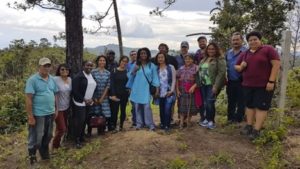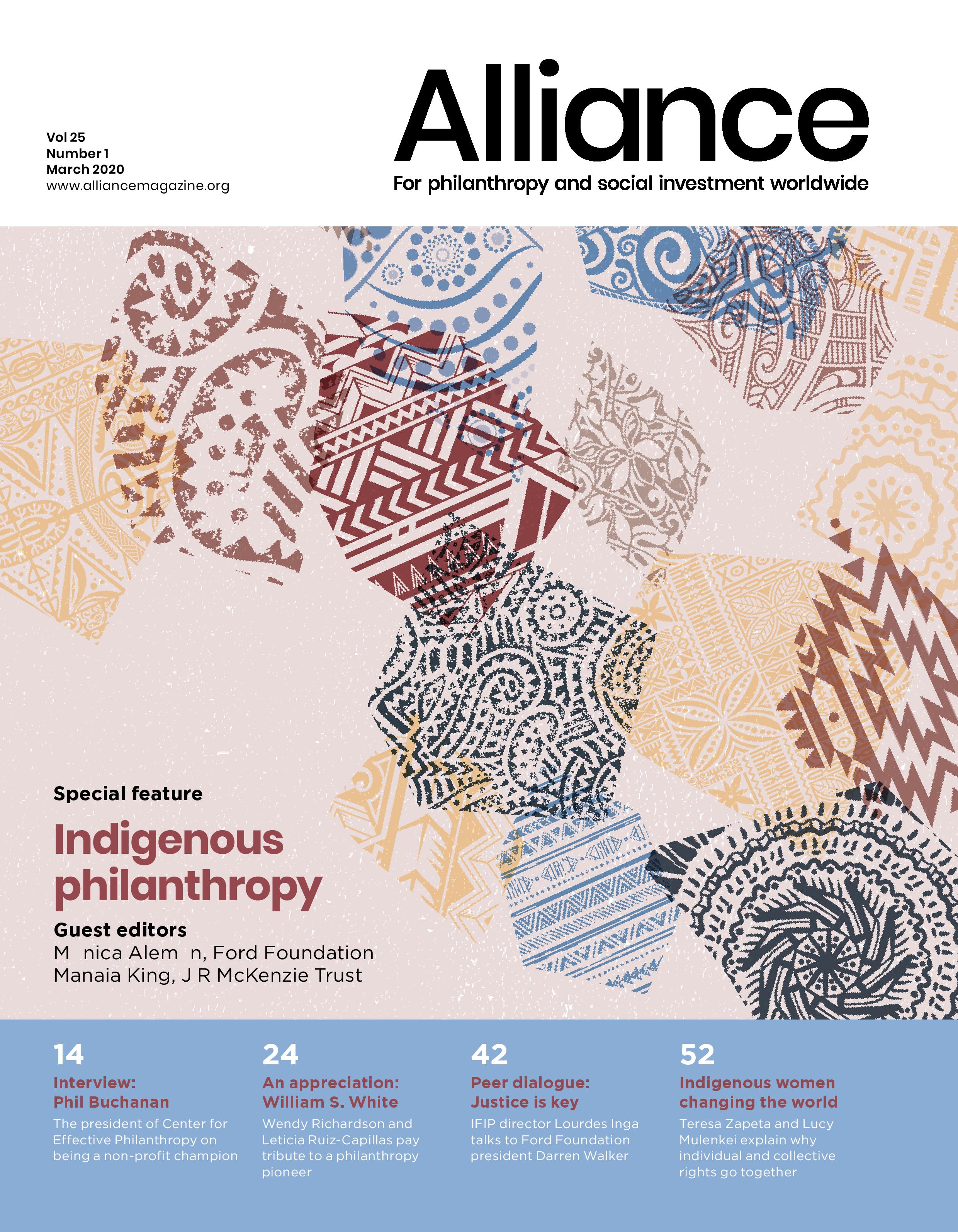Money is often not the most important element of investments in Indigenous communities, taking a backseat to building long-term partnerships
Indigenous communities, foundations and entrepreneurs have launched creative structures and approaches to access financial capital, link to markets and promote the well-being of their communities, traditions and lands. They have been spurred on by the unequal burdens of climate change, the rich knowledge, traditions and land base of Indigenous Peoples, and persistent wealth inequities. All of these investments are founded on fostering long-term partnerships in which money takes a backseat to economic justice and engaged participation in setting the terms and conditions of investment. They require creative financing structures and demand that foundations and investors bring a fresh mindset to the role of capital.
Funders should respect Indigenous Peoples’ determination of their own priorities. While donors may have funds, they don’t have the ideas, people and energy to make an investment real.
There is no one model for success to foster sustainable livelihoods. Support for local Indigenous governance and self-determination can use different vehicles based on tribes, cooperatives, entrepreneurs or individuals. Key is helping to create non-extractive, renewable and resilient livelihoods that focus on local markets and needs while being sensitive to Indigenous cultures and local conditions.
Funders should respect Indigenous Peoples’ determination of their own priorities. While donors may have funds, they don’t have the ideas, people and energy to make an investment real. Constructively engaging in conversations about the terms of capital and the governance surrounding who profits from an endeavour help address issues of power in finance.
The varied examples below demonstrate how Indigenous communities, entrepreneurs and cooperatives come together in consensual investing relationships.
Ejido Verde social enterprise
Ejido Verde engages Purépecha communities in Michoacán, Mexico, in a community lending model for regenerative forestry. Its use of crowdfunding is unusual and provides ten-year no-interest loans to help families secure land and plant and tend native pine trees. Other finance supporting the project engages investors in long-term, low-interest loans. ‘If we look at our crops, we can see we are suffering the consequences of climate change,’ says farmer Juan Javier Juárez Figueroa, ‘[This project] means that I will have a better income for my family. We want to plant trees against climate change and for the environment.’ Historically, these communities produced high-quality pine resin used in industrial products. By replanting pine forests destroyed by drug cartels, local Indigenous communities create jobs and sustainable livelihoods while restoring land for future generations.
By shifting control, grassroots partners who have been innovating practices for business, investment, saving and lending, are not only able to generate prosperity but also well-being.
Raven Indigenous Impact Fund
Raven Indigenous Capital Partners runs an impact-first capital fund out of Vancouver, Canada, for Indigenous-owned, -led and -benefiting businesses. Emerging from the Truth and Reconciliation Commission on Residential Schools in Canada, Raven Fund’s founders recognised that no existing funds focused on First Nation entrepreneurs and the fund is an attempt to remedy that. Raven’s first funded businesses focus on Indigenous technology and digital media, natural cosmetics enriching the lives of Indigenous youth, and financial technology enabling financial and social inclusion for Indigenous individuals and communities. Raven Indigenous Impact Fund is a strong example of how to empower Indigenous entrepreneurs to scale businesses that also help their communities through employment and services.

Buen Vivir Fund learning exchange in Guatemala.
Buen Vivir Fund
The Buen Vivir Fund is a community-centred evergreen fund in which investors and investees co-define goals. By shifting control, grassroots partners who have been innovating practices for business, investment, saving and lending, are not only able to generate prosperity but also well-being. It describes its model as regenerative finance as it commits all parties to learning and changing their practices. One investment involves a $15,000 grant alongside a $75,000 loan for a Mayan Medical Clinic to the Asociación Femenina para el Desarrollo de Sacatepéquez (AFEDES) in Guatemala. AFEDES will make a 5 per cent Aporte contribution or solidarity payment on top of its loan repayment to create a reserve fund demonstrating the commitment of all parties to the fund’s financial well-being.
First Nations Oweesta
First Nations Oweesta is a financial intermediary based in Colorado, US, that lends to Native-led Community Development Financial Institutions (CDFIs) to build wealth and capacity within Native communities. First Nations Oweesta has provided technical assistance and capital to Native CDFIs for 20 years, thereby increasing the capacity and well-being of front-line financial institutions that serve Native families, reducing payday loans, providing financial education, and supporting asset-building opportunities such as small business creation and home mortgages. This kind of tailored due diligence and education work is beyond the capabilities of most funders.
Challenges to investing in Indigenous Peoples
Indigenous Peoples, foundations and entrepreneurs are working in creative and innovative ways to overcome persistent capital gaps. All of these efforts benefit from start-up capital (grants, first-loss capital, low-interest loans, etc) to create investment opportunities, incorporate culturally relevant returns and provide capital for transformative economies.
Native-led efforts such as the Raven Indigenous Impact Fund and First Nations Oweesta are good examples of foundations stepping back and supporting Indigenous-run institutions. Both Ejido Verde and the Buen Vivir Fund showcase creative capital deployment and structures. Ejido Verde’s regenerative forestry work requires long-term investment in Indigenous communities’ forest management. The Buen Vivir Fund illustrates how Indigenous communities can work with investors to create a fund where grants and other kinds of support complement investment and enable benefits to flow in both directions.
Strong relationships form the basis for investing needed capital in Indigenous communities. The enterprises with the greatest returns for Indigenous Peoples and the environment are those that adopt approaches to investment that prioritise community engagement and well-being.
Jennifer Astone is principal at Integrated Capital Investing.
Email jen@iciaptos.com
Twitter: @JenAstone
Steven Heim is managing director at Boston Common Asset Management.
Email sheim@bostoncommonasset.com





Comments (0)